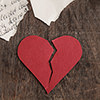
Six-shooter. Wheel gun. Big Iron. Whatever you call them, the revolver has been a machine that has stood the test of time, used by militaries, law enforcement, hunters, and civilians alike relatively unchanged for almost 200 years. However, with the rise of autoloading (semi-automatic) pistols becoming affordable and reliable in the past few decades, the revolver has been slowly dying out as newer generations abandon it. While the revolver is almost entirely phased out of law enforcement and military use, a good number of civilians and hunters still rely on them for protecting their lives. This begs the question, are revolvers still a relevant option in the modern era?
First, the bad news:

Revolvers have some inherent disadvantages, which we will discuss here.
Low Capacity, slow reloads:
More ammo = more firepower = better survival chances. Most revolvers hold 6 rounds, while compact ones hold only 5. Many autoloading (aka "semi-automatic") handguns can hold anywhere from 7-17 rounds of ammunition depending on the size of the gun and cartridge used, although 8-12 is quite common for compact handguns. That is nearly 33-100% more rounds in a gun with similar weight and dimensions. Quite simply put, your shots must count with a revolver and in real life-or-death situations, even trained shooters (such as policemen) tend to lose accuracy.
Not only is capacity low, but reloading a revolver is slow, cumbersome, and easy to mess up. You must first count your rounds or wait for a click, as there is no indication you expended all your ammo. Then you must release the cylinder, push the ejector rod to knock out the spent casings, and use a speedloader or moon clip to insert new rounds into the cylinder. This whole process takes a few or more seconds. While this situation applies to all firearms, it wasn't unheard of in the past for people (policemen usually) to get ambushed while reloading their revolvers.

Inefficiencies

Quite simply put, revolver cartridges have some inefficiencies and some more prominent than others.
The first we will discuss is the cylinder gap, but this isn't that big of a deal. A revolver has a small gap between the cylinder and the barrel, which allows some hot gasses to escape instead of propelling the bullet forward. Only a small amount of gas escapes though, and it has a negligible impact on performance. It is more of a safety issue, as you can burn yourself with improper hand placement.
Revolver cartridges are also quite bulky and quirky. For example, the 9mm Luger (AKA the 9mm Parabellum or 9x19mm) can propel a nearly identical sized and shaped bullet with 100-150 lb-ft more energy and around 200-300 fps (feet per second) higher muzzle velocity than the most common revolver round, the .38 Special (.38 SPL), while in a 4/10" shorter case. The famed .357 Magnum cartridge also barely outperforms a 9mm cartridge in a snub nose (short, ~2" barrel) revolver, despite having much more recoil. On a tangent, there are a few revolvers available in 9mm these days and they perform as well as their semi-auto counterparts. However, as mentioned previously, revolvers are about the same size/weight as many compact semi-auto handguns yet hold less capacity. If size matters, you might as well get a compact semi-auto handgun instead.

Reliability is not as perfect as myth holds.
A revolver does have inherent advantages in reliability over autoloaders, but that will be discussed next. To keep it short, a revolver can still have reliability issues and they aren't as easy to fix as an autoloader. A hangfire can explode a revolver, injuring you. If a revolver cylinder locks up or goes out of time it will no longer function without taking it apart using tools. Most revolver failures require disassembly and repair by either a gunsmith or the manufacturer, whereas many autoloading failures are fixed with a simple "tap and rack" on the magazine and slide. Generally, though, if a revolver can shoot over 300 rounds without any mechanical issues, it should be good to go for years to come.
Now the good news:

Some rounds, such as the .357 Magnum, are a true man-stopper.
Sure, you might have only 6 rounds, but if those 6 rounds were will incapacitate a man in only 1, maybe, 2 connecting shots, you feel much better about your chances. A decade-long study released in the 90's studied all different types of defensive shootings and tracked each gun caliber, type of gun, number of shots it took to stop an attacker, number of deaths, failures to stop, etc.
While nearly early common pistol cartridge performed about the same (.45 ACP, .40 S&W, 9mm, .38 SPL, et al.), the .357 Magnum performed very well, with 1.7 rounds on average incapacitating a man, less than 1/10 of all shootings using it failing to stop, 44% were 1-shot-stops, and over 4/5 of shots being highly accurate. Those are numbers you can bet your life on. Not to mention, psychology also suggests the sheer power of the .357 Magnum helps to stop attackers. The massive blast and explosion make attackers lose the will to fight. Other common revolver cartridges (.38 SPL & .44 Magnum) also performed adequately. The .357 Magnum and .44 Magnum are commonly carried by hunters as backups as they can sufficiently kill or stop large game or predators that come too close.
Not to mention, statistics (although hard to confirm) show that most defensive shootings are resolved in around 2-3 rounds fired anyway, with usually around 6 being the high-end limit. So statistically speaking, a revolver's lower capacity isn't that much of a problem.
Revolvers are simple to operate, are highly reliable, and have high accuracy potential.

While the reloading aspect I covered earlier is certainly complex, with practice it becomes second nature. A revolver is easier to use than an autoloading handgun because once loaded, you simply keep pulling the trigger until either empty or the threat is stopped. There will then be a button or simple lever to release the cylinder, allowing you to push the ejector rod, knocking out old cases, and start reloading. The heavy double-action (not single-action revolvers, which are not for self-defense) trigger pull of a revolver is not only better for making sure you don't have a negligent discharge (ND), it also means a revolver doesn't require a manual safety to fiddle with. A deliberate and forceful trigger pull will be the only way it will fire. In stressful situations, or for those who don't have much experience shooting guns, this simple firing operation can save lives.
The revolver is also a simple, reliable design. If you hit a dud round, just pull the trigger again. An autoloading handgun would require checking that the magazine is seated properly and pulling back on the slide to clear malfunctions ("tap and rack"), something which can take time and lead to confusion for inexperienced shooters. In a revolver, only the cylinder rotates to fire stationary cartridges, rather than relying on a moving slide to eject, grab, and push a cartridge into the barrel such as in an autoloading handgun.
Lastly, because the barrel on a revolver is fixed, rather than having to move from a recoiling action, revolvers have a high accuracy potential, especially at longer ranges with longer barreled models.
Revolvers have great benefits for concealed-carry.

While there are many great concealed-carry (CC) semi-autos available on the market today, revolvers have their benefits for CC. The first is everything I just mentioned in the previous section, you want all of that in a carry gun. Next, revolvers have smooth and cylindrical shapes, which easily slide easily into and out of holsters or belt lines and fit well against the body instead of jagged/square shapes of semi-autos. The bulging cylinder seems like a disadvantage at first, but it helps to push the gun's grip off your body, leading to more reliable and easier draws.
Many compact revolvers can also easily be slid into a pocket, without even needing a holster. Some carry models are also very lightweight. This is perfect for someone who either can't be bothered needing a rigid holster attached to their waistline every day or must leave for a quick errand.

Lastly, spare ammo for a revolver is compact to carry. Instead of a long, extended magazine that semi-autos need, there are only bullets carried in either a moon clip or speedloader, and both can easily be thrown into your pocket.

They're cool.
This is a rather trivial point, but it still stands in terms of relevancy. From old Westerns to action movies of the past, the revolver has remained the weapon of choice for the cool guy, whether he was bad or good in nature. Just as classic muscle cars and vinyl records refuse to die, the revolver also refuses to, partially because there is a certain element of them that remains cool to this day.
Do not let this influence your decision though, as the tool you use to defend your life should NOT rely on trends or appearances.
Conclusions

Overall, I think revolvers still have relevance to this day given the pros and cons of them. They aren't as effective as autoloading handguns but still have unique benefits that keep them alive. My recommendation for anyone considering buying a revolver is to look up reviews online first (YouTube too) and possibly go to a shooting range where you can try out the gun, or at least a similar competitor's copy. All people have unique self-defense situations. Some need protection against regular bear or coyote encounters, some are regularly in dangerous neighborhoods with gang activity, and some would like a gun on them just in case but don't want to be burdened. Think of the realistic situations you might encounter in your everyday life, and using this guide, decide if a revolver is right for you (Hint: Terrorist or mass shooter attacks are so rare the chances of you being directly involved in one is very small. Not that you shouldn't take steps to prepare for the said situation, but don't overburden yourself carrying a crazy amount of gear and firepower expecting one to happen).
If you do choose a revolver, my personal recommendation is to avoid cheap brands such as Taurus and instead buy from reputable brands such as Ruger or Smith & Wesson (S&W). The Ruger LCR (shown earlier) and SP101 are popular carry choices, as are the S&W Model 340 PD, Model 442 Performance Center Pro-Series, and the S&W Model 66 Combat Magnum. S&W also makes great larger sized revolvers more suitable for home defense such as the Model 19 Classic.

My personal recommendation is to get a lightweight model .38 SPL +P (Ruger LCR or the S&W Model 442) and have 1-2 spare moon clips or speedloaders of ammo on you. I recommend choosing a revolver with an internal or spurless hammer for concealed carry as you are less likely to snag on clothing during a draw. Some also like to get .357 Magnum versions of these lightweight concealable revolvers and only shoot .38 SPL +P in them since they are stronger guns but are slightly heavier, making them easier to shoot with the hotter .38 +P rounds. However, optimal performance for .38 SPL is out of a gun made for it only. 9mm Luger versions of these revolvers are also fantastic choices as 9mm Luger is nearly as potent as .357 Magnum out of snub ~2" barrels yet is cheaper to shoot and more common (great if you already own a 9mm semi-auto handgun). 9mm revolvers do require the use of moon clips to function properly, which might be a downside. However, both .357 Magnum and 9mm out of these small, light carry revolvers are little fun to shoot from the intense recoil, so if you are not used to powerful handguns or new to shooting I would stick to the .38 SPL models.
As for ammo selection, those of you who are well-acquainted with firearms can look at these gel tests results and make the decisions yourselves. Otherwise, for a snub-nose .38 SPL the Federal 130 gr HST JHP, the Hornady Critical Defense 110 gr FTX, and the Winchester Range LE 130 gr JHP are all great rounds for personal defense.
Thank you for reading. If you have any questions, comments, or concerns please leave them below.
 Holidays
Holidays  Girl's Behavior
Girl's Behavior  Guy's Behavior
Guy's Behavior  Flirting
Flirting  Dating
Dating  Relationships
Relationships  Fashion & Beauty
Fashion & Beauty  Health & Fitness
Health & Fitness  Marriage & Weddings
Marriage & Weddings  Shopping & Gifts
Shopping & Gifts  Technology & Internet
Technology & Internet  Break Up & Divorce
Break Up & Divorce  Education & Career
Education & Career  Entertainment & Arts
Entertainment & Arts  Family & Friends
Family & Friends  Food & Beverage
Food & Beverage  Hobbies & Leisure
Hobbies & Leisure  Other
Other  Religion & Spirituality
Religion & Spirituality  Society & Politics
Society & Politics  Sports
Sports  Travel
Travel  Trending & News
Trending & News 
Most Helpful Opinions